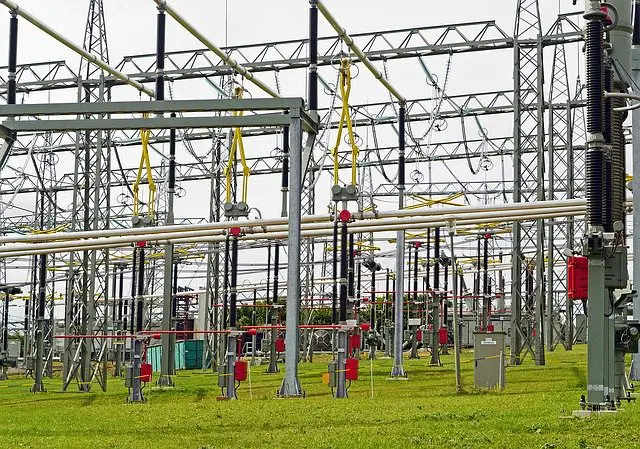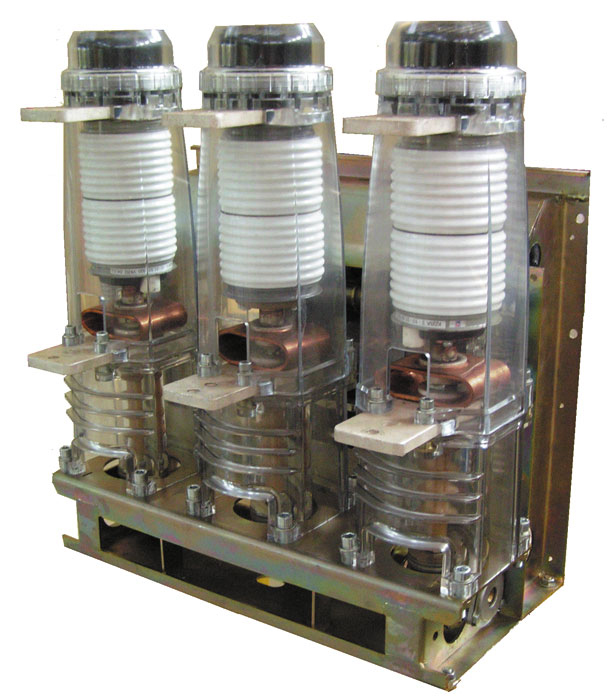Different Types of High Voltage Circuit Breakers Used in Substations

A circuit breaker is an electrical switching device that is used to protect and control the electrical system that can be operated either manually or automatically.
The mechanical power to operate most high voltage circuit breakers are provided by means of a spring charge. Usually, the spring is charged by a DC motor through a gear mechanism and it will also have a provision for manual spring charge. The spring is released by a mechanism that is operated by the closing or tripping coil for the respective operations; these coils are a linear solenoid actuator used to provide the electrical signals.
During both manual and automatic operations, a control signal needs to be provided to the coils. A manual operation usually gives a remote signal from a switching unit to close or open the breaker. Whereas the automatic tripping is done by the tripping circuit which is acted on the event of fault caused by overload, short circuit, etc.
Unlike small household breakers like MCB, ELCB, RCCB, the high voltage circuit breakers are operated by means of various tripping circuits. Mainly a master tripping circuit which is operated by collective inputs from different relays circuits like Overcurrent relay, Earth fault relay, Distance protection relay, etc.
During the operations, the current-carrying high voltage lines produce a huge amount of arcing between the conductor gaps. The HV circuit breakers extinguish such arcing and permit the safe and reliable operation of the feeders.
Below listed are few types of high voltage circuit breakers, some are both used as medium voltage or high voltage circuit breakers.
Vacuum circuit breaker (VCB)
Vacuum circuit breakers are used for a voltage range of 3 kV to 38 kV.

By Fesenko kirill – Own work, Public Domain, Link
The main part of the VCB is a vacuum container or also called as bottle. It is of moving and fixed contacts that close and opens inside a vacuum arc chamber, where the arc quenching takes place.
VCB’s are installed in both indoor and outdoor units. Indoor units consist of VCB trucks installed inside a control and relay panel, which can be racked up and down or racked in and out. Outdoor units are usually fixed on a structure.
SF6 circuit breaker
In SF6 circuits breakers, sulfur hexafluoride (SF6) a highly inert gas is used as the medium of arc quenching. SF6 is a good dielectric medium, it has better recombination and superior insulating properties.

By Wtshymanski at en.wikipedia – Own work, Public Domain, Link
During the operation high-pressure SF6 is released from the reservoir to the gap between the contacts, where the arc is formed. SF6 gas has an excellent electronegative property and a strong tendency to absorb the free electrons. Hence, it absorbs the conducting free electrons from the arc and forms comparatively immobile and heavier negative ions which are ineffective as a charge carrier. The loss of conducting electron results in the formation of the highly dielectric medium that is enough to extinguish the arc.
Oil circuit breaker
Oil circuit breakers use oil as the medium for arc quenching. The contacts are operated in an immerged condition inside the oil which has good insulating and dielectric properties.
During the operation, a huge amount of heat generated from the arcing vaporizes the oil and decomposes into hydrogen gas. It pushes the oil and creates a hydrogen bubble around the arc region. The gas bubble around the arc is compressed and forces the oil into the arcing space between the contacts. The hydrogen gas has good heat conductivity that cools down the arc which further increases the rate of de-ionization and arc quenching.
Oil circuit breakers are of two types,
1) Bulk oil circuit breaker (BOCB)
BOCB circuit breakers use oil as both arc quenching medium and insulating medium between current carrying contacts and earth contacts.
2) Minimum oil circuit breaker (MOCB)
MOCB circuit breaker uses oil only for arc quenching or as an interrupting medium; here the current carrying parts are insulated by air or porcelain. In this type, the insulating oil is required only in the interrupting chamber and thereby it reduces the requirement of the oil quantity. Hence it is called minimum oil circuit breakers.
Airblast circuit breaker
Air circuit breakers use compressed air or gas to interrupt the arc. In air blast circuit breakers, compressed air stored in a tank is released through a nozzle at high velocity. During the operation of the breaker, the air valve connected between the compressed air tank and the arcing chamber will be opened, then the pressurized air enters into the arcing chamber.
The air blast does multiple things, it fastly pushes the moving contacts, cools the arc and also moves the ionized particle present between contacts. Thereby the dielectric strength of medium increases, which results in the extinguishing of the arc and interruption in the flow of current.
What a nice. Compress. Articule